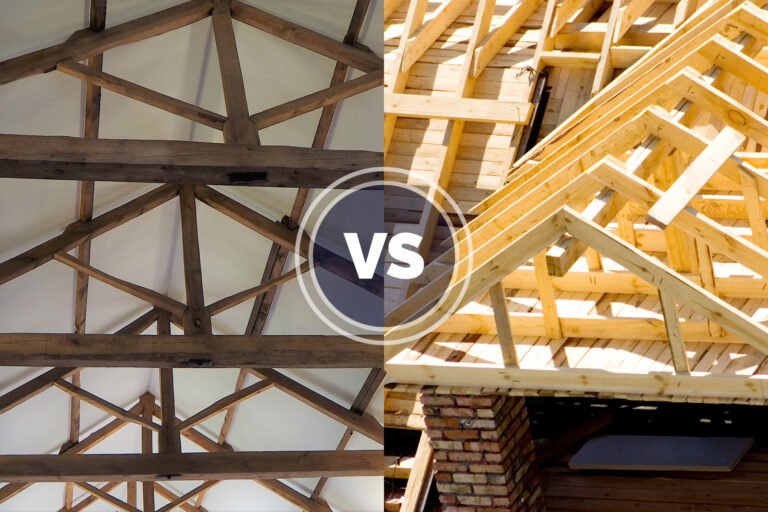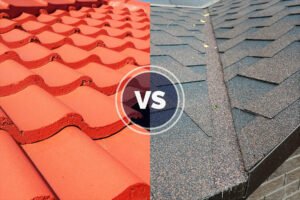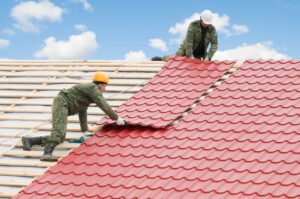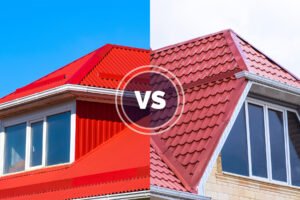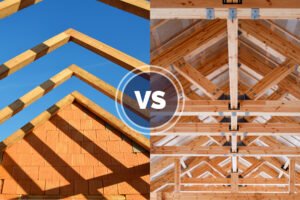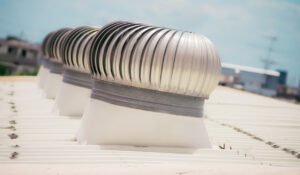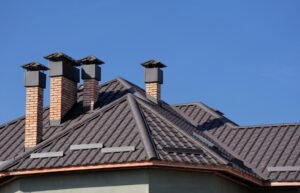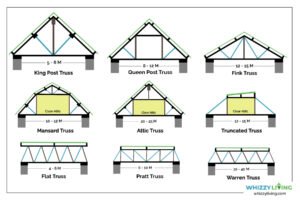Pitched roofs need a truss to hold the roof and support the roof shingles. There are two common trusses used to bear the weight and span a longer distance of the roof, a king post and a queen post truss. But which of these will fit your roof perfectly?
Today, we’ll compare the properties of the king and queen post trusses and curate a table for reference to know which one is the best truss for your roof.
Key Takeaways
- King post and queen post trusses differ based on spans and decor. But that’s not all! Check more differences below!
- A king post is short-spaned, whereas a queen post truss is much longer. You can check the angles, pitches, and spans here.
- King post trusses use timber or glulam for construction, but you can even use steel for a queen post truss.
- King posts are thick and sturdy, while queen posts are thin and lightweight and need extra clamps for better fixing. Let’s explore other major differences!
What Is a King Post Truss?
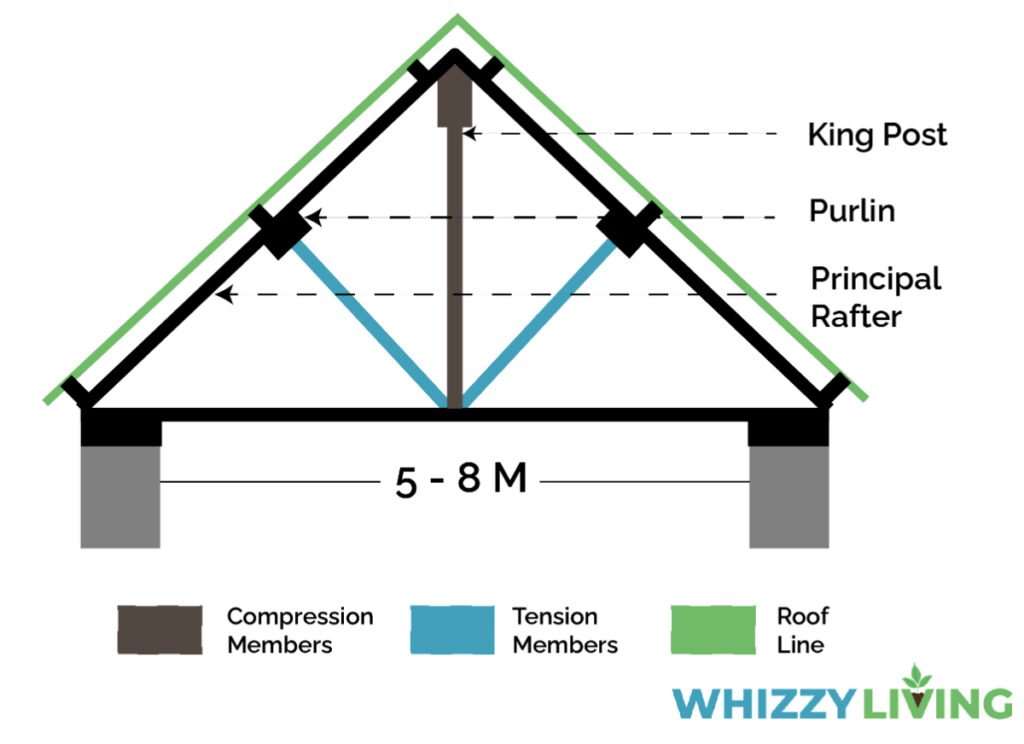
What Is It: A king post truss is a short-spaned truss with a central vertical post, rafters, and struts. It has a horizontal tie beam that holds the members and maintains the truss.
How Does It Work: A king post truss transfers all the load from the roof’s apex to the rafters and the tie beam. And its vertical post reduces sagging and transfers the load to the supporting walls.
A king post truss is shorter than a queen post truss and supports low-pitched garage and shed roofs. So, it has lesser parts and braces that allow a faster and easier installation than the queen post.
You can even customize it for triangular and curvilinear roofs, unlike a queen post truss. Or, you can prefabricate it according to the span in compact houses.
But, since king post trusses aren’t flexible, you must limit the spacing to 3M center to center or add more columns.
Moreover, these trusses have a series of posts and do not allow a clear attic, storage, and utility space. So, you cannot install heavier central AC units or venting pipes with this one.
| Average Cost | $ 7000 – 8000 for the installation, and $20 – 30 per hour for the labor |
| Average Span | 5 – 8M |
| Materials | Cypress, Glulam, or Reclaimed Timber |
Add steel brackets and raise the truss’s bottom chord for more strength and attic space.
What Is a Queen Post Truss?
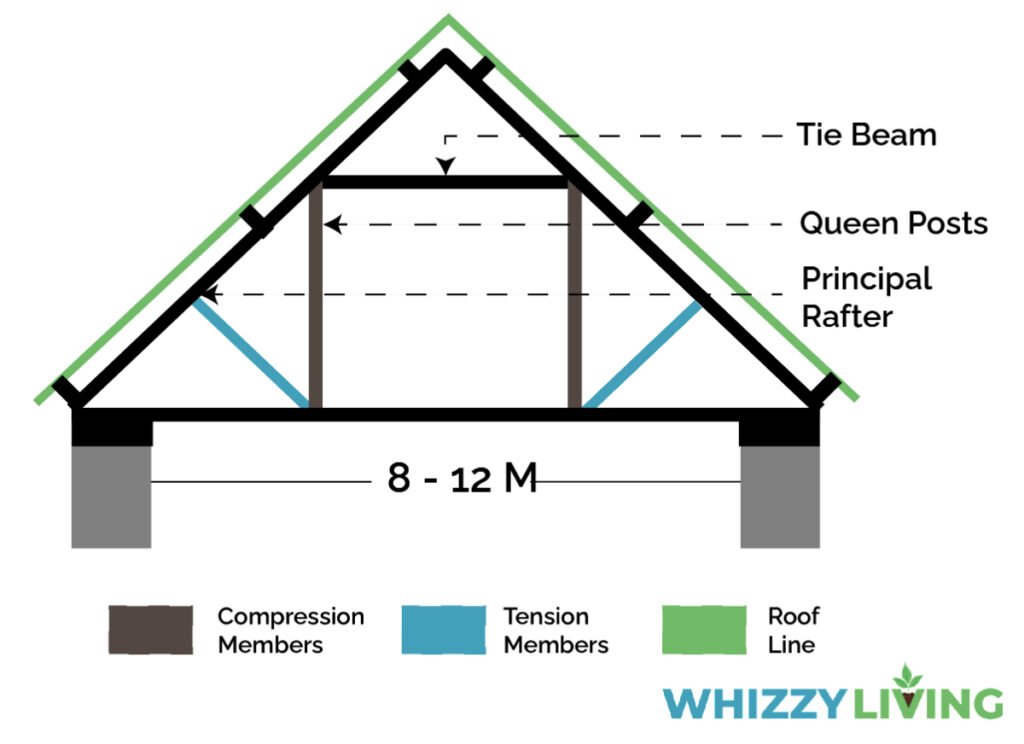
What Is It: A queen-post truss is a long-span truss with two vertical posts and a tie beam at the bottom and the top. And it has a triangular webbing that braces the rafters from the sides and reduces buckling.
How Does It Work: A queen post truss carries all the load from its rafters and passes it to the vertical posts. These, in return, channel the load along the tie beams and transfer it to the supporting walls.
A queen post truss is a long-span, triangulated truss with thin steel or timber sections. It is not only lightweight and affordable but doesn’t overload the center like a king post truss. So, it is customizable, and you can use it for different roof pitches and designs.
Moreover, a queen post truss provides better stability and attic space than a king post truss. It can even expand to longer spans up to 18M.
But, in contrast, it has more parts that make it difficult to install and maintain.
Furthermore, a queen post truss buffers the roof and controls heat and airflow without insulation. And it even supports roof vents, turbines, and roof flashings along its edges. So, it’s equally efficient in dry and tropical climates.
| Average Cost | $ 9000 – 12000 for the installation, and $20 – 30 per hour for the labor |
| Average Span | 8 – 12M |
| Materials | Steel, Yellow Pine, Teak, Fir |
Use straining beams and posts to reinforce the truss and use it for larger spans.
Differences Between a King Post and a Queen Post Truss
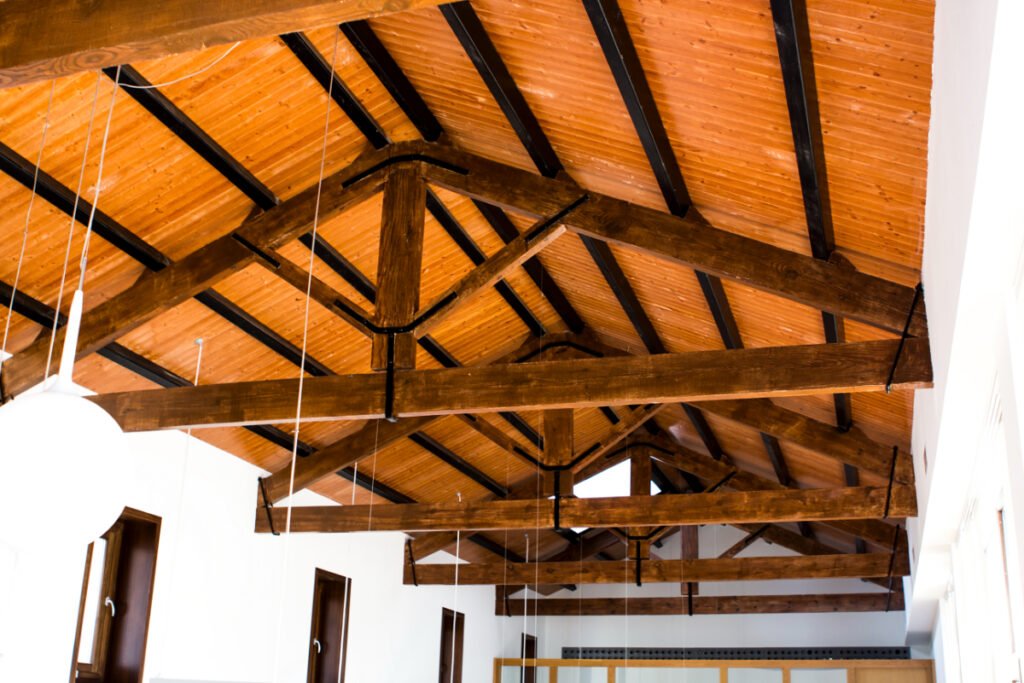
King and queen post trusses have similar costs and parts but vary in their spans and decor styles. So, let’s analyze some more differences and pick the right truss for your roof.
1. Structure
A king post has a simple structure with a central post and a connecting tie beam that holds the rafters at the ends. And it doesn’t have any bracing or webbing and uses thick, stand-alone parts for the roof assembly.
In contrast, a queen post truss is complex and has two vertical posts and parallel beams at both ends. It also has extra bracing, brackets, and clamps for better stability.
2. Pitch
King post trusses are low-rise and support roof pitches between 30 – 45°. Queen post trusses are comparatively steep, and you can use them for greater 60° pitches too. But don’t forget to add a straining beam and use thicker Cedar wood posts for more stability.
3. Decor
King post trusses look traditional, but queen posts are the best for Tudor, Gothic, and Craftsman styles. Or, you can even panel a queen post truss and use it for a modern Scandinavian or European look with a shingles roof.
4. Roofing components
King post trusses have a tie beam, principal rafters, and a final ridge beam to support the truss.
But, queen post trusses are more complex. They use two posts, rafters, tie beams, straining beams, and purlins for their assembly.
5. Installation
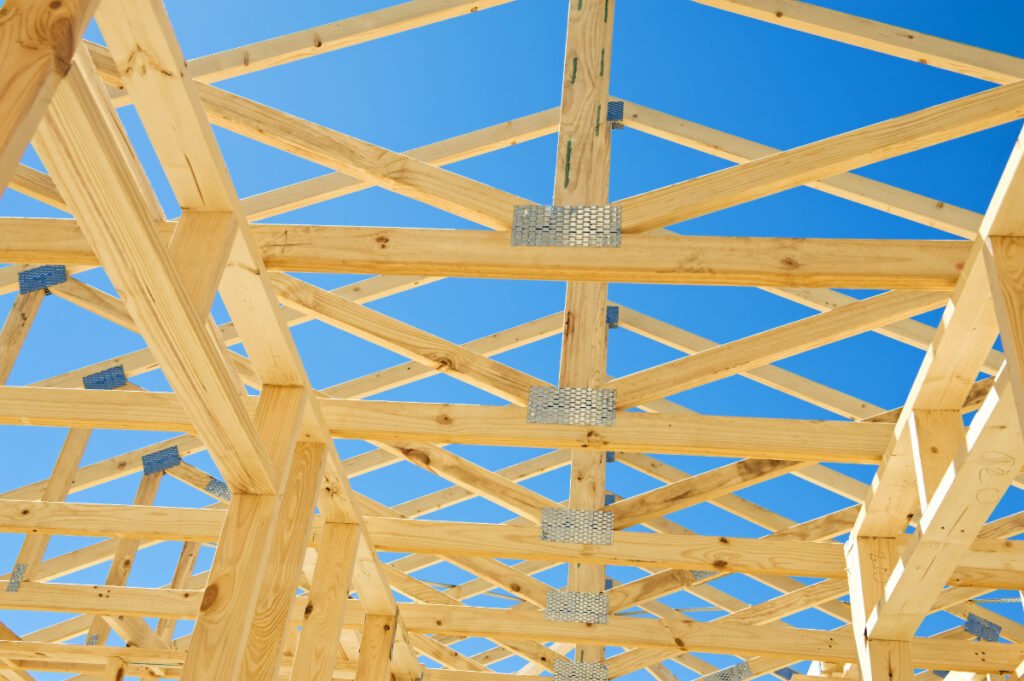
King post trusses have lesser members and simpler assemblies. So, they are faster and easier to install and can be easily welded or screwed according to the span.
But queen post trusses need some calculations and have more parts that slow down the installation. So, it’s advisable to hire a professional for this one.
Here are some more differences in comparing a king post and queen post truss:
| Parameter | King Post Truss | Queen Post Truss |
| Span | 5 – 8M | 8 – 12M |
| Structure | Central supporting post and two rafters | Two tension posts and a tie beam |
| Average Cost | $ 7000 – 8000 | $ 9000 – 12000 |
| Materials | Timber or Glulam | Timber, Glulam or Steel |
| No. of Beams | 1 Tie Beam | 1 Tie Beam + 1 Straining Beam |
| Rafter Connection | Rafters connected with Ridge Pitch at the apex | Rafters directly connected to the Queen post heads |
| Future Expansion | Not flexible; Cannot be expanded | Easily expandable |
| Attic Space | No Utility, Storage or Clear Attic | Clear Attic space |
| Insulation | Needs heavy sound insulation and panelling | Creates a buffer and works with less insulation too |
| Decor | Traditional, Victorian | European, Tudor, Craftsman |
What Type of Truss Is the Best in Snowy or Windy Areas?
A queen post truss is the best for snowy and windy areas as it has extra bracing and better vertical support. Plus, the truss has a higher pitch that drains the snow and doesn’t buckle under its weight.
But, a quick post truss is quite gentle and might accumulate more snow on its apex. And this might overburden the truss and cause it to leak or crack.
Add rigid or spray foam insulation to melt the snow and relieve the extra pressure off the apex.
Which Truss Is the Best for Garages?
A king post truss is the best for detached garages and offers a sturdy, well-insulated covering at a low cost. You can even change it to a half-truss and use it as a lean-to roof for attached garages.
In contrast, queen post trusses are expensive and might increase the heating costs.
Apply construction adhesive to strengthen the truss in larger 3-car or 4-car garages.
Which Truss Is the Best for Attic Spaces?
A queen post truss is the best for attic spaces and allows clear storage and utility space inside. It buffers the attic from weather and controls the temperature and moisture inside.
A king post truss has central vertical members that block the attic and reduce the space, making it a relatively less efficient choice for attics.
Add a thin plank or sill at the bottom if you plan to install heavy utilities and pipes in the attic space.
Which Truss Is the Best for Shingle Roofs?
A king post truss is the best for shingle roofs and has a gentle slope that protects them from falling. In contrast, a queen post truss is the best for sturdy tile roofs that are screwed to the rafters.
Use lightweight asphalt and aluminum shingles with low-span king post trusses. You can also check more roofing shingle options here.
Tips for Choosing the Best Truss for Your Roof
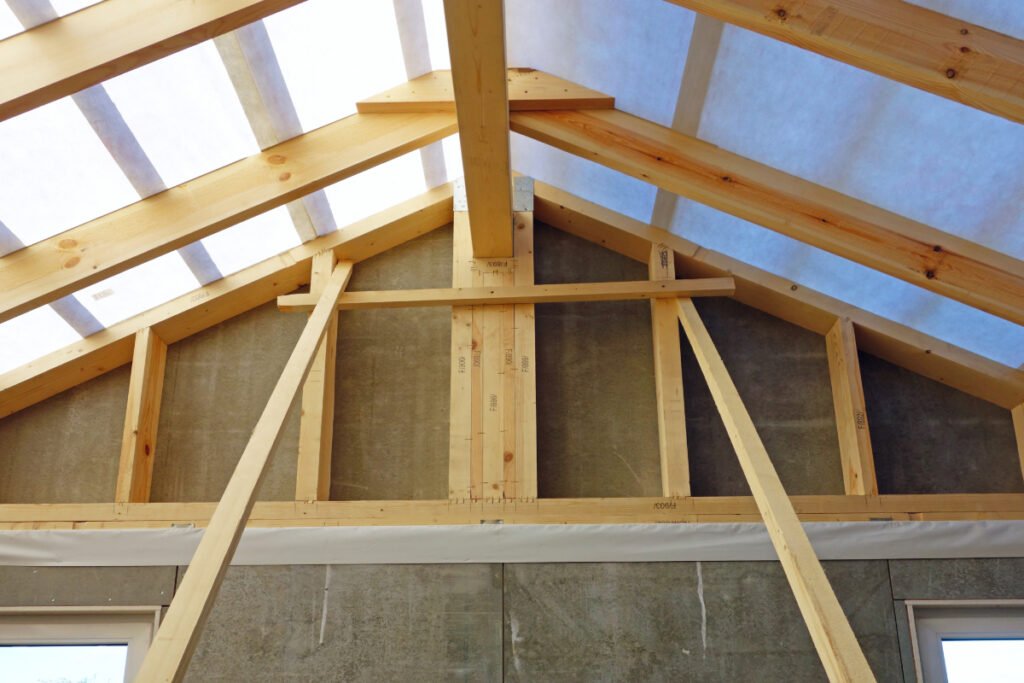
- Pick king post trusses for small rooms and go with queen post trusses for larger residences.
- Use queen post trusses for better moisture and temperature control in the attic.
- Choose king posts for traditional, Victorian ambiance while going with queen posts for modern or European style roofs.
- Combine king and queen post trusses to form a Mansard truss for double-story houses.
- Use prefabricated king post trusses if you have a compact site with no space for on-site construction.
- Pick alloyed or galvanized steel queen posts for better fire and wind resistance.
What Is the Maximum Span of a Queen Post Truss?
A queen post truss easily spans up to 12 -13M. But, you can reinforce it with a central vertical post and use it up to 18M.
Which Truss Is the Most Suitable for 8m Spans?
A king post truss is more suitable and economical for 8M spans and can be combined with different roof shingles or tiles for a better roof covering.
How Far Apart Should the Trusses Be?
Roof trusses must be at least 24 inches away to avoid buckling and mildew attack. But, you can place them at a distance of 16 inches from each other on smaller roofs.
Both king post and queen post trusses are excellent roofing systems. But king posts are short-spaned, whereas queen posts are longer. Similarly, queen posts are solid and weather resistant, but king posts are cheaper and flexible to different roof shapes.
So, now that we have compared these two popular trusses, it’s time to pick one and reinforce your roof. But that’s not all! You can use about 20 types of roof trusses as per your design and pitch. So, jump to the guide and know it all!

